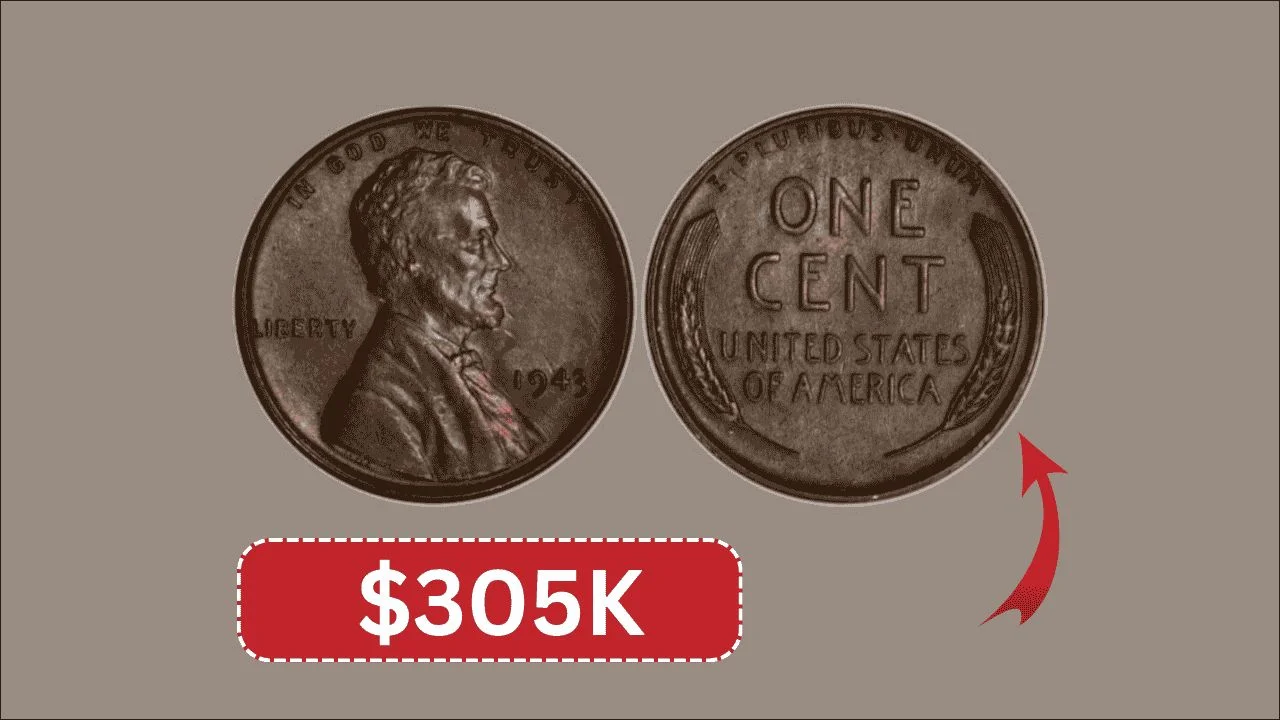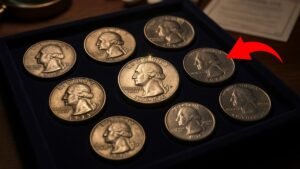Imagine reaching into your pocket, pulling out some spare change, and discovering a coin that could be worth over $300,000. Sounds like something out of a movie, right? But in the fascinating world of coin collecting, it’s a very real possibility — especially if you happen to stumble upon a rare Lincoln Wheat Penny from a special year.
One such penny recently made headlines for fetching a jaw-dropping $305,000 at auction. But what makes a tiny one-cent coin worth more than most cars, or even a small house? In this article, we’ll dive into the captivating story of the Lincoln Wheat Penny, why certain editions are so valuable, and how you might spot one in your own pocket change.
If you’re even remotely curious about rare coins, valuable pennies, or the thrill of a hidden treasure hunt, you’ll want to read this.
What Is the $305,000 Lincoln Wheat Penny?
The $305,000 Lincoln Wheat Penny refers to an extraordinarily rare one-cent coin, specifically a 1943 penny struck on a bronze (copper) planchet instead of the standard steel used that year.
During World War II, copper was a critical resource for ammunition and military equipment. As a result, the U.S. Mint switched to using zinc-coated steel for pennies in 1943. However, a few leftover bronze planchets from 1942 accidentally made their way through the presses.
One such error coin sold for $305,000 at auction, making it one of the most valuable pennies in U.S. history.
A Brief History of the Lincoln Wheat Penny
The Lincoln Wheat Penny, also affectionately known as the Wheat Cent, was first minted in 1909 to celebrate the 100th anniversary of Abraham Lincoln’s birth. It was the first U.S. coin to feature a real person’s portrait — a design by artist Victor David Brenner.
On the reverse side, two simple wheat stalks frame the words “One Cent”, a design that remained in circulation until 1958, when it was replaced by the Lincoln Memorial cent.
Table: Quick Facts About the Lincoln Wheat Penny
| Feature | Details |
|---|---|
| First Year of Issue | 1909 |
| Designer | Victor David Brenner |
| Obverse | Abraham Lincoln’s profile |
| Reverse | Two stylized wheat stalks |
| Composition (1909–1942) | 95% copper, 5% tin and zinc |
| Composition (1943) | Zinc-coated steel |
| Discontinued | 1958 |
Why Is This Coin So Valuable?
So what makes the 1943 bronze Lincoln Wheat Penny worth a staggering $305,000? It boils down to a combination of factors:
- Rarity:
Only an estimated 15–20 bronze 1943 pennies were ever accidentally minted. - Production Error:
It was a mistake caused by leftover copper blanks being struck during the switch to steel coins. - Collector Demand:
Numismatists and investors alike covet rare error coins, driving prices sky-high at auctions. - Historical Significance:
As a WWII-era artifact and a numismatic anomaly, it represents a unique moment in U.S. Mint history.
Table: 1943 Penny Composition Comparison
| Year | Composition | Estimated Value |
|---|---|---|
| 1943 | Zinc-coated steel | $0.10–$10 |
| 1943 | Bronze (copper) | $100,000–$305,000+ |
How to Spot Valuable Lincoln Wheat Pennies
Want to check your change or old coin collection for a potential jackpot? Here’s what to look for:
Signs of a Valuable Penny:
- Date of 1943
- Copper color (reddish-brown) instead of silvery gray
- Doesn’t stick to a magnet (steel pennies will)
Also, keep an eye out for other valuable Wheat Pennies such as:
- 1909-S VDB
- 1914-D
- 1922 No D
- 1955 Double Die Obverse
Pro Tip:
Always use a magnet and a magnifying glass when inspecting old coins — it’s quick, easy, and could make you thousands of dollars richer.
Fascinating Facts and Records
- The most expensive Lincoln cent ever sold was a 1943-D Bronze Penny, auctioned for a record-breaking $1.7 million in 2010.
- Regular 1943 steel pennies are the only U.S. coins made of steel for general circulation.
- Even common Wheat Pennies from the 1910s and 1920s can fetch $10–$500 depending on condition and rarity.
Expert Coin Collecting Tips
If you’re new to coin collecting or hoping to uncover valuable finds, here are some insider tips:
- Focus on Pre-1959 Pennies:
All Lincoln Wheat Pennies are collectible, with many worth well above face value. - Check for Mint Marks:
Look for small letters under the date (D = Denver, S = San Francisco). Certain combinations are far rarer and more valuable. - Use a Coin Value Guide:
Websites like PCGS.com and NGCcoin.com offer free price guides for U.S. coins. - Consider Professional Grading:
Coins authenticated by grading services like PCGS or NGC can fetch significantly higher prices. - Join a Local Coin Club:
Great for learning, trading, and connecting with fellow hobbyists.
Frequently Asked Questions (FAQs)
How much is a regular 1943 steel penny worth?
A circulated 1943 steel penny is typically worth $0.10 to $1, with uncirculated versions valued up to $10–$20.
Are there other rare Lincoln Wheat Pennies?
Absolutely. Highly valuable examples include the 1909-S VDB, 1914-D, 1922 No D, and 1955 Double Die Obverse.
How can I tell if my 1943 penny is copper?
Look for a reddish color and test it with a magnet — copper pennies won’t stick.
Where can I sell rare pennies?
Use reputable dealers, major auctions like Heritage Auctions, or certified online platforms like eBay, preferably after getting them professionally graded.
Final Thoughts
The story of the $305,000 Lincoln Wheat Penny proves that incredible value can be hidden in the most ordinary places — like your pocket or an old coffee can full of change.
With just a little knowledge and a keen eye, you could stumble upon a tiny treasure worth a life-changing sum. Whether you’re a seasoned collector or a casual hobbyist, the thrill of the hunt is what makes coin collecting so exciting.
So, check your spare change. That unassuming penny just might be worth a fortune.




